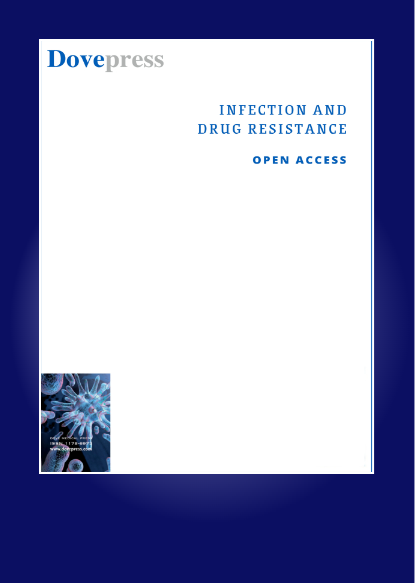A Nomogram for Predicting the Effectiveness of Consultations on Multi-Drug Resistant Infections: An Exploration for Clinical Pharmacy Services
IF 2.9
3区 医学
Q2 INFECTIOUS DISEASES
引用次数: 0
Abstract
Purpose: The increasing multi-drug resistance (MDR) is a serious threat to human health. The appropriate use of antibiotics can control the progression of MDR and clinical pharmacists play an important role in the rational use of antibiotics. There are many factors that influence the effectiveness of multi-drug resistant organisms (MDRO) infection consultations. The study aimed to establish a model to predict the outcome of consultation and explore ways to improve clinical pharmacy services.Patients and methods: Patients diagnosed with MDRO infection and consulted by clinical pharmacists were included. Univariate analysis and multivariate logistic regression analysis were used to identify independent risk factors for MDRO infection consultation effectiveness, and then a nomogram was constructed and validated.
Results: 198 patients were finally included. The number of underlying diseases (OR=1.720, 95% CI: 1.260– 2.348), whether surgery was performed prior to infection (OR=8.853, 95% CI: 2.668– 29.373), ALB level (OR=0.885, 95% CI: 0.805~0.974), pharmacist title (OR=3.463, 95% CI: 1.277~9.396) and whether the recommendation was taken up (OR=0.117, 95% CI: 0.030~0.462) were identified as independent influences on the effectiveness of the consultation. The nomogram prediction model was successfully constructed and the AUC of the training set and the verification set were 0.849 (95% CI: 0.780– 0.917) and 0.761 (95% CI: 0.616– 0.907) respectively. The calibration curves exhibited good overlap between the data predicted by the model and the actual data.
Conclusion: A nomogram model was developed to predict the risk of consultation failure and was shown to be good accuracy and good prediction efficiency, which can provide proactive interventions to improve outcomes for potentially treatment ineffective patients.
Keywords: multi-drug resistance, nomogram, clinical pharmacist, consultation, clinical pharmacy services
预测耐多药感染咨询效果的提名图:临床药学服务探索
目的:多重耐药性(MDR)的不断增加严重威胁着人类健康。合理使用抗生素可以控制 MDR 的发展,而临床药师在合理使用抗生素方面发挥着重要作用。影响多重耐药菌(MDRO)感染咨询效果的因素有很多。该研究旨在建立一个预测会诊结果的模型,并探索改善临床药学服务的方法:研究纳入了被诊断为MDRO感染并接受临床药师咨询的患者。采用单变量分析和多变量逻辑回归分析确定MDRO感染咨询效果的独立风险因素,然后构建并验证了一个提名图:最终纳入了 198 名患者。基础疾病数量(OR=1.720,95% CI:1.260- 2.348)、感染前是否手术(OR=8.853,95% CI:2.668- 29.373)、ALB水平(OR=0.885,95% CI:0.805~0.974)、药剂师职称(OR=3.463,95% CI:1.277~9.396)和是否采纳建议(OR=0.117,95% CI:0.030~0.462)被认为是咨询效果的独立影响因素。训练集和验证集的 AUC 分别为 0.849(95% CI:0.780- 0.917)和 0.761(95% CI:0.616- 0.907)。校准曲线显示,模型预测的数据与实际数据有很好的重合度:建立了一个预测会诊失败风险的提名图模型,结果表明该模型具有良好的准确性和预测效率,可为潜在治疗无效患者提供积极的干预措施以改善治疗效果。 关键词:多重耐药;提名图;临床药师;会诊;临床药学服务
本文章由计算机程序翻译,如有差异,请以英文原文为准。
求助全文
约1分钟内获得全文
求助全文
来源期刊

Infection and Drug Resistance
Medicine-Pharmacology (medical)
CiteScore
5.60
自引率
7.70%
发文量
826
审稿时长
16 weeks
期刊介绍:
About Journal
Editors
Peer Reviewers
Articles
Article Publishing Charges
Aims and Scope
Call For Papers
ISSN: 1178-6973
Editor-in-Chief: Professor Suresh Antony
An international, peer-reviewed, open access journal that focuses on the optimal treatment of infection (bacterial, fungal and viral) and the development and institution of preventative strategies to minimize the development and spread of resistance.
 求助内容:
求助内容: 应助结果提醒方式:
应助结果提醒方式:


